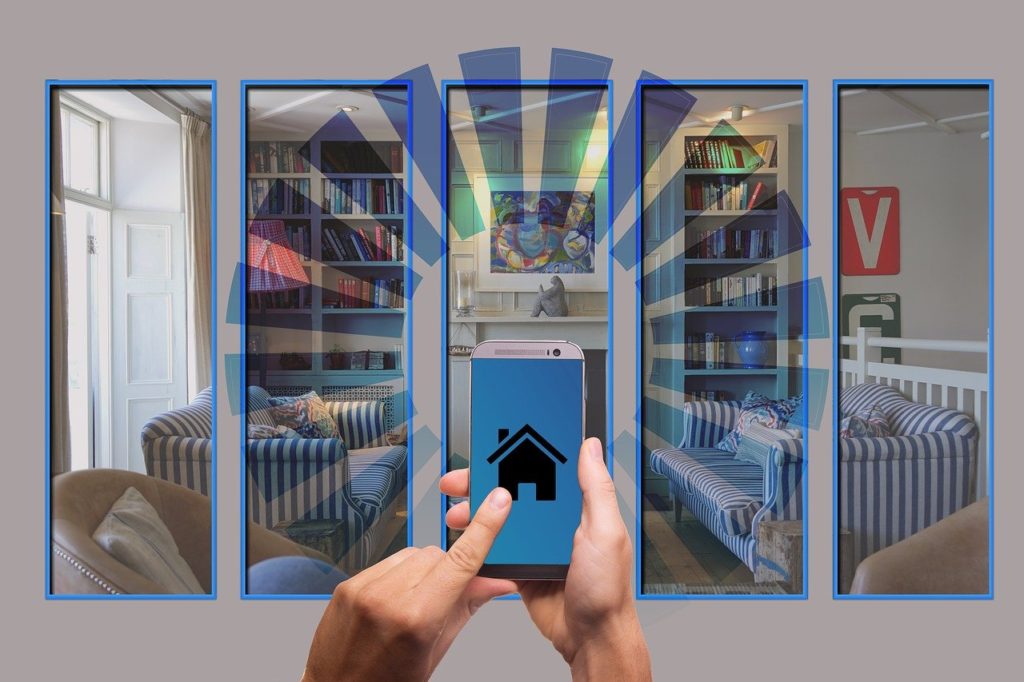Ambient computing is a term which describes a world where the very process of computing becomes transparent and literally ambient. More and more devices contribute to the processing of modern life and work to make it easier. Computing moves from dedicated, monolithic computing devices (such as smartphones or laptops) into virtually everything at some level.
Ambient computing hinges on the Internet of Things (IoT) which originally described a future where everything we use is connected to the internet and all of our devices, from cars to refrigerators, are connected. This vision of the future is becoming a reality and ambient computing is a big part of the reason why.
Any device with a processor, memory, and some storage can be used to perform some level of home automation or computing. With ambient computing, connections to the internet are not strictly necessary to use a device.
Imagine a future where we can walk down the street and our watch or glasses tells us that we are running late for a meeting (even without data). We can have a refrigerator in the kitchen that tells us when we are low on milk or juice and can order more. Our car can tell us when we need to go to the grocery store and can order more groceries to be delivered.
As ambient computing evolves, it will be used in a variety of ways. Some people will use it to make their lives easier. Others will use it to make their lives more interesting. The future is bright for ambient computing.
Ambient Computing and its Relationship to the Internet of Things (IoT)
As computing becomes more integrated into our everyday lives, it becomes ubiquitous. Today, we use networking and edge computing to facilitate communication between the lights in our homes, our coffee pot, our refrigerator, and even our cars. Even washing machines and toilets are becoming increasingly connected. You used to need a wireless router which could handle 2 or 3 devices, now the minimum is measured in the double-digits.
Today, your mobile phone, your wearable devices, your tablet, your laptop, and even your television are connected and equipped with a dazzling array of sensors. A quick search will reveal the sheer scope of items which employ smart computing and sensors, from children’s toys and decorations to coffee pots and rice cookers, and even to self-driving cars. All of this technology, embedded on (and in) everything around us, is the backbone of ambient computing.
Computing becomes like running water or electricity, widespread to the point it isn’t even remotely optional anymore for day-to-day life. The internet and some kind of smart device are already about at that level, but smart technologies will become completely integrated with every facet of life at some level in most homes. It’s already hard enough to avoid smart TV’s, and the same is about to happen with virtually every electrical device.
So what is ambient computing? At its simplest, the goal is to get computing “out of the way” (which is essential for the IoT). The idea is that computing should not block our experience of the world. Traditional computers can get in the way, but more and more devices have pushed them out of the way entirely. You don’t shop for a computer, you shop for a device to compute on.
Ambient Computing in Practice
A smart device performs some measurement or computation and communicates that information to a server (for certain smart technologies). The server may then transmit the data received to a third-party, such as a cloud or mobile application that can then act on the data or further process it (which can run into various localities, such as France). For example, the data collected by your washing machine’s sensor may be sent to a cloud or mobile application to determine the level of water in the washer. The washing machine may send an alert to you to let you know that the washer needs service based on data readings.
An ambient computing device can monitor and analyze our environment to detect patterns, events or anomalies and respond. It can send a message, record data, provide assistance, or take some other action. For example, the washing machine may send a message to a server or nearby device when the level of water in the washer is low, or when the washer is overfilled due to mechanical failure or similar. The server or device may respond in the form of providing feedback to the washing machine to let it know that it needs service, or it may provide a link to a local service center for the washing machine’s owner to take corrective action.
For many people, this is a net boon, but it can also be interpreted as an invasion of privacy by others. Murder charges are mixed in with invasive telemetry which is combined with exploitation. Ambient computing sees you as you are, with no filter and no makeup for a new digital dystopia whether you want to be seen or not. It also frees you, depending on what you want and accept from computing.
Drawing a Line with Ambient Computing
For me, I draw a line with internet connectivity and similar. It’s true that ambient computing and the IoT provide us with more and better ways to interact with things in our environment. For example, when you’re at home, the ambient computing devices that are connected to your home network can provide you with information about your environment without you needing to really work for it.
These devices can inform you about the temperature in your living room, the amount of light in your house, and the humidity in your child’s bedroom. They can tell you when (or just do it) it’s time to switch on your A/C or furnace, and can tell you how close you are to running out of batteries. They can also tell you about which lights are on in your kitchen, and help you know where to find things in your home, such as that set of keys or remote you’ve been looking for. They also can help you keep track of what you’re doing throughout your day by informing you about the status of the door to your office, or alerting you when you run out of milk, so that you can avoid making unnecessary trips to the grocery store.
The problem is that the third-party (or even first-party data) is invasive (or can be targeted). Tech companies want as much as possible without limitations. The technology comes with a trade-off but you get to decide whether the convenience is worth it or not. I don’t want my washer measuring water composition, but I can deal with a Bluetooth light-bulb. You can make choices without making sacrifices to your way of life.
Traditional Computing in the Ambient Era
For most people, we have become so accustomed to using our smartphones or similar to communicate with any one of our connected IoT devices that it almost feels natural. You don’t need to worry about IRQ settings, you just need to download an app. Technology is largely plug-and-play unlike what most people traditionally associate with higher level computing. The irony is that the simplification has made the miracles of yesteryear something you almost have to shop to avoid. Computing is in everything, everywhere anymore.
You don’t need to mess with configurations, you just need to hit Checkout. Traditional computers are the brain of a smart room, but they aren’t what you see (or even react with depending on the products). The point of ambient computing is to remove the things people don’t want to see (e.g. sensor reads, environmental sensing, etc.) so that what we want to work with is all that’s left. A computer is only as valuable as the work it provides, but a computer is now what you work on and not what you “use”. Traditional computing has shifted.
While connectivity and computing capabilities get more and more widespread, there are still computing tasks which will remain as difficult as they always have been. Smart sensors don’t help you learn to program, they just provide an easier catalyst to interest (like with the Arduino). Even as we start to have more of our home’s devices connected to the Internet of Things, we will likely continue to use our personal computers for many functions, such as word processing, email, spreadsheets, presentations, data analytics, etc.
Wrapping up Ambient Computing
A quick look at the topic of ambient computing will show that it encompasses a wide variety of technological paradigm shifts. From ubiquitous computing, or technology that exists everywhere and is seamlessly integrated into the environment (as seen with Amazon’s Ring doorbell), to ambient computing, where virtually everything contributes to analyzing and simplifying parts of your life. As computing continues to grow more commonplace and pervasive, it makes sense that technology, including computing itself, will continue to be included as a part of the environment around us.
Ambient computing is computing designed to be used in everyday life. Ambient computing can be used in a range of different environments such as the home, office, and even when we are shopping. It can also be as small as a smart tag and can extend beyond just your computing device by allowing for ambient connections. Because of the large number of possibilities for ambient computing, it is hard to define what it is exactly.
Sensors can be included in practically anything from smart watches that provide our biometric information to automobiles that can monitor the driver’s state of health. They can also be used for sensing our own physical environment, from our posture and biometric data to the presence of light and noise. This allows us to receive information from our surroundings and to interact with the physical world in new ways. This can range from health data, to a smart home, to augmented reality (AR) and virtual reality (VR). Even if you aren’t embracing it, it exists and is alive in the world at large from supermarkets to businesses.
Conclusion
The Future of Ambient Computing Ambient computing is only going to progress more and more. It will continue to grow in popularity and users of the devices that it is running on will increase as well. Currently, there are many different manufacturers making ambient computing devices. There are probably already smart devices slowly creating an ambient computing environment in your home or apartment now.
If you think about ambient computing and IoT from the perspective of technology, it’s very clear how we’re going to see this change the way we communicate, work, travel, and play in the years and decades to come. However, I think most people don’t consider other aspects of technology. Ambient computing is the way we think about computing beyond what’s on a screen.
I didn’t think about it much until it was here. Now my home and my sphere of the world is populated by a variety of devices which all contribute to my life in different ways. From cameras which watch us to sensors in every new device you buy which monitor and communicate aspects of health and productivity in your life and beyond, computing is everywhere. Are you ready to embrace it?
Image by Gerd Altmann from Pixabay


